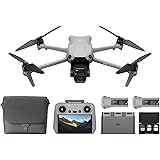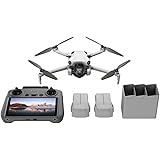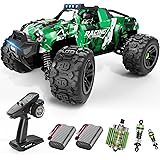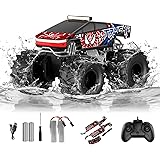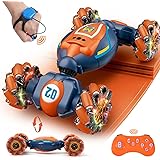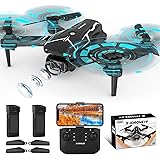Every hobbyist eventually reaches a point with a passion project where reflection becomes inevitable. What began with enthusiasm, innovation, and countless hours of tinkering might, over time, evolve into a bittersweet farewell. Such is the sentiment beautifully captured by Paweł Spychalski in the video above, as he bids adieu to his custom-built 3D printed tricopter, a project that, despite its initial promise, ultimately failed to meet his expectations for flight performance.
Paweł’s journey with his tricopter highlights a universal truth in the world of DIY drone building: not every innovative design translates into practical, enjoyable flight. His candid admission about the tricopter largely “hugging motors” for over a year resonates deeply with anyone who has committed time and resources to a build that ultimately sits on a shelf. This experience provides a valuable opportunity to delve deeper into the unique characteristics of tricopters, the practicalities of 3D printing drone frames, and the strategic decisions every builder faces.
Understanding the Unique Dynamics of Tricopter Design
The allure of a tricopter often lies in its mechanical simplicity compared to quadcopters, utilizing only three motors. However, this design choice introduces distinct challenges, particularly concerning yaw control. Unlike a quadcopter, which achieves yaw by differential thrust from its four motors, a tricopter relies on a single, tilting tail motor to provide yaw authority. This fundamental difference is a primary source of many of the issues Paweł encountered.
The tail motor assembly, featuring a servo mechanism, is inherently the most vulnerable point on a tricopter. Any significant impact, especially during a crash, often translates directly into damage to the servo gears. Consequently, replacing these delicate components becomes a recurring, frustrating, and costly maintenance task. Even high-quality, expensive servos can exhibit a degree of “slop” or looseness on the shaft, leading to imprecise yaw control and contributing significantly to unstable flight characteristics. This mechanical play prevents the tail motor from holding its position rigidly, a critical requirement for precise directional changes and maintaining a stable hover.
The Intricacies of Tricopter Flight Controller Tuning
As Paweł keenly observed, achieving satisfactory flight performance with a tricopter often becomes a delicate balancing act during flight controller tuning. The relationship between yaw authority and vibration levels is particularly challenging. If the Proportional (P) gains for yaw are set too low, the tricopter lacks responsiveness, making precise control difficult and leading to a “loose” tail that drifts uncontrollably. This results in a poor flight experience, often described as “shitty flight,” as Paweł put it.
Conversely, increasing the P gains sufficiently to achieve solid yaw authority can introduce another set of problems: excessive vibrations. These vibrations, originating from the tail servo mechanism trying to overcorrect minute movements, propagate throughout the frame. This not only degrades flight performance but can also negatively affect flight controller sensors, leading to inaccurate readings and further complicating stable flight. The dilemma highlights a core engineering compromise: enhancing one aspect of control often degrades another, especially in mechanically complex systems like the tricopter’s tail.
Furthermore, the speed and accuracy of the servo protocol play a crucial role. Older or slower protocols can introduce latency, making it harder for the flight controller to issue timely corrections, thereby exacerbating both yaw instability and vibration issues. Modern, faster protocols, often found in more expensive servos, could potentially improve performance, but as Paweł noted, the investment might not be worthwhile for a design with inherent limitations.
The Dual Nature of 3D Printed Drone Frames
The decision to utilize a 3D printed frame for a drone project, such as this 3D printed tricopter, offers a compelling mix of advantages and disadvantages. On the positive side, 3D printing technology democratizes drone design, allowing hobbyists to:
- Achieve Cost-Effectiveness: The material cost, especially for common filaments like PLA, is significantly lower than that of pre-fabricated carbon fiber frames.
- Facilitate Rapid Prototyping: Designers can quickly iterate on frame modifications, test new ideas, and adapt components without expensive manufacturing processes.
- Enable Customization: Frames can be precisely tailored to specific component sizes, battery configurations, or aesthetic preferences, offering unparalleled flexibility.
However, the choice of material, specifically PLA plastic as used in Paweł’s tricopter, comes with inherent limitations. While easy to print and affordable, PLA is known for its rigidity and relative brittleness compared to more resilient materials like PETG or TPU. During high-impact events like crashes, PLA frames are prone to cracking or shattering, often necessitating replacement of entire sections. This contrasts with the durability of carbon fiber, which offers a superior strength-to-weight ratio and greater impact resistance, albeit at a higher cost.
Designing for 3D printing also requires a keen understanding of material properties and structural integrity. Factors such as infill density, wall thickness, and print orientation significantly influence the frame’s strength and resilience. A well-designed 3D printed frame can be surprisingly robust, but it rarely matches the brute strength of a professionally manufactured carbon fiber or aluminum counterpart.
Strategic Project Abandonment: A Builder’s Evolution
The narrative of decommissioning the 3D printed tricopter is not merely one of failure but rather a story of strategic evolution and learning within the DIY drone hobby. Paweł’s realization that the tricopter was merely “hugging some parts” he wanted for other projects is a common turning point for many builders. It underscores the importance of assessing a project’s long-term viability and enjoyment factor.
There are several pragmatic reasons why a hobbyist might choose to abandon a particular drone design:
- Poor Performance: Despite best efforts, some designs simply do not fly well, leading to frustration rather than enjoyment.
- High Maintenance Burden: Frequent repairs, especially for recurring issues like broken servo gears on a tricopter, can drain enthusiasm and resources.
- Shifting Interests: As builders gain experience, their preferences for flight styles (acro, racing, long-range) or drone types (quads, airplanes, wings) may evolve.
- Resource Optimization: Components like motors, electronic speed controllers (ESCs), and flight controllers are valuable. Reallocating them to more promising projects is a practical decision.
Paweł’s decision to stick with airplanes and quadcopters reflects a common trajectory in the RC world. Quadcopters, with their inherent stability and redundant four-motor setup, offer a more forgiving and versatile platform for various flight styles, including acro and racing, precisely because they lack the single point of failure that a tricopter’s tail servo presents. This strategic re-focusing allows enthusiasts to channel their creativity and technical skills into areas that yield greater satisfaction and practical flight time, rather than grappling with the fundamental limitations of a challenging design like the 3D printed tricopter.


